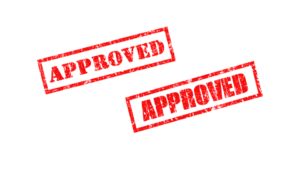Knowing how to conduct a waste audit is important in every business. This is because it is not only the obvious sources of waste that may be draining profit but the hidden sources.
A waste audit is a process of identifying, quantifying, and analyzing the amount and types of waste generated by a business.
It helps businesses to identify areas where waste can be reduced, recycled, or eliminated altogether.
Conducting a waste audit involves a thorough assessment of a business’s waste management practices, including waste generation, handling, and disposal.
Defining Hidden Waste
As businesses aim to maximize profits, it becomes increasingly important to identify all forms of waste that may be hidden within their operations.
While most business owners may be familiar with tangible waste, such as excess inventory or material waste, there are other forms of waste that may be less apparent.
These hidden wastes can silently drain a business’s profitability and hinder their growth in the long run. According to experts, there are eight areas of hidden waste that can impact a business’s bottom line.
These include overproduction, waiting, excess inventory, unnecessary motion, defects, over-processing, unused employee talent, and underutilized technology.
By identifying and addressing these areas of waste, businesses can improve their efficiency, productivity, and ultimately increase profitability.
This article explores each of these areas of hidden waste and their impact on businesses.

What is a Waste Audit & Why Is It Necessary?
A waste audit is an essential tool for businesses to identify opportunities for waste reduction, cost savings, and environmental sustainability. The major reason that delights most business owners and executives is that it can help with cost reduction initiatives.
By conducting a waste audit, businesses can gain a comprehensive understanding of their waste management practices, including the amount and types of waste generated and the associated costs. This information can help your business identify opportunities to reduce waste, increase recycling, and lower waste management costs.
Ways From Which Hidden Waste Is Generated
Hidden waste in a company is usually generated from the following ways:
- Over Production
- Waiting
- Excess inventory
- Unnecessary Motion
- Defects
- Over Processing
- Unused Employee Talent
- Under-utilized Technology
Over Production
Overproduction is a form of waste that occurs when a business produces more products or services than what is currently required by the market demand or what is necessary to meet customer needs.
Overproduction can lead to higher production costs, excess inventory, and increased waste.
One example of overproduction is a clothing manufacturer that produces more clothes than what is currently in demand. This could result in unsold inventory that may take up valuable storage space and eventually become outdated or out of style, leading to waste.
In addition, producing more clothes than what is needed can lead to higher production costs and increased labor expenses.
A tradesperson or small construction renovation business may order more building materials than necessary, leading to excess inventory and increased storage costs.
Tradespeople or small businesses may overbook jobs or take on too many projects at once, leading to reduced quality of work and increased risk of errors.
Overproduction can also occur in the service industry, such as in healthcare. For instance, if a hospital overbooks appointments or performs unnecessary medical tests, it can lead to wasted resources, increased costs, and longer waiting times for patients.
In an office environment it can be the printing of extra copies of documents or creating needless reports – to name a few.
In all cases, overproduction can lead to unnecessary waste, increased costs, and reduced efficiency.
2. Waiting
Waiting is a form of waste that occurs when people, materials, or information, including approvals, are not available when needed, leading to delays in the production or delivery of products or services.

Waiting can lead to reduced productivity, increased lead times, and increased costs.
For example, in manufacturing, waiting for raw materials or supplies can cause delays in the production process.
If the manufacturer runs out of a specific component needed to complete a product, it may have to wait for the supplier to deliver more, causing delays and reducing productivity.
In construction, waiting for equipment can cause delays in completing projects. For example, if a construction crew needs a specific tool to complete a task and the tool is not available, under repair, or is in use by another crew, they may have to wait, causing delays and reduced productivity.
3. Excess Inventory
Excess inventory is a form of waste that occurs when a business holds more inventory than it needs to meet customer demand or production requirements. Excess inventory ties up resources such as warehouse space, cash, and labor, leading to increased costs and reduced profitability.
Some examples include:
A manufacturer may produce more products than necessary to meet demand, leading to excess inventory. For example, if a company produces 10,000 units of a product, but demand only requires 8,000 units, the extra 2,000 units become excess inventory.
A business may overestimate demand for a product, leading to excess inventory. For example, if a retailer orders too much inventory based on an optimistic sales forecast or seasonal fluctuations, it may end up with excess inventory when sales do not meet expectations.
4. Unnecessary Motion
Unnecessary motion is a form of waste that occurs when workers have to move more than necessary to complete a task. This can include bending, reaching, and walking, among other actions.
It can lead to wasted time, increased risk of injury, and reduced productivity. Examples include a poor workplace layout that is not designed for efficient workflow can lead to unnecessary motion.
If a manufacturing plant has machinery located far apart from each other, workers may have to move back and forth between different machines, leading to unnecessary motion.
Poor placement of tools and equipment and inefficient communication can lead to unnecessary motion for pickup or clarification.
5. Defects
Defects are a form of waste that occurs when a product or service does not meet customer expectations or fails to meet its intended purpose. Defects can lead to customer dissatisfaction, increased costs, and reduced profitability. Some examples include:
Manufacturing defects: A manufacturing defect occurs when a product is not made to the correct specifications, leading to a product that does not meet customer expectations or fails to meet its intended purpose.
Packaging defects: For example, if a product is packaged in a way that causes it to break during shipping, it may lead to lost sales and customer dissatisfaction.
6. Over-Processing
Over-processing is a form of waste that occurs when a business spends more time, money, or effort on a task than is necessary. This can result in excessive work, duplication of effort, or unnecessary processing of information.
Examples include when a worker inputs more data than is necessary for the task at hand, unnecessary inspection steps during production, document processing (revisions)
Inventory management: Over-processing can occur in inventory management when a business manages inventory levels more frequently than necessary.
For example, if a business conducts daily inventory checks but could effectively manage inventory with weekly checks, it may be a form of over-processing.
7. Unused Employee Talent
Hidden waste created from unused employee talent is a form of waste that occurs when a business fails to utilize the skills and expertise of its employees effectively.
This can lead to a loss of productivity, lower employee morale, and missed opportunities for innovation and growth. Here are some specific examples of hidden waste created from unused employee talent – micromanagement, lack of development opportunities.
8. Underutilized Technology
Hidden waste created from underutilized technology is a form of waste that occurs when a business fails to make full use of the technology it has invested in. This can lead to inefficiencies, decreased productivity, and missed opportunities for innovation and growth.
Some examples of hidden waste created from underutilized technology include – unused software licenses, inefficient or poorly used automation tools; failure to use large amounts of data collected.
What About Distractions and Procrastination?
Yes, distractions and procrastination can create a form of hidden waste in a business. Distractions can refer to anything that diverts an employee’s attention away from their work, such as social media, personal emails, or interruptions from colleagues.
Procrastination, on the other hand, refers to delaying work or putting it off until later.
Both distractions and procrastination can lead to wasted time, decreased productivity, and missed deadlines, which can ultimately affect a business’s bottom line.
When employees are distracted or procrastinating, they are not fully focused on their work, which can lead to errors and inefficiencies.
Furthermore, distractions and procrastination can create a ripple effect throughout a business, as missed deadlines and delays can cause other employees to have to pick up the slack or rework tasks that were not completed on time.
This can lead to increased stress, decreased morale, and decreased overall productivity.

7 Steps – How to Perform A Waste Audit
The process of conducting a waste audit involves 7 major steps:
Identify and prioritize potential hidden waste initiatives in your business
Keep in mind that you cannot do them all at once! It can be tempting to want to conduct 2-3 initiatives at the same time but this can create inefficiencies.
Select ONE initiative that will make the biggest impact on the business
Review all the initiatives you have identified and select ONE initiative that is currently the most important for the smooth running of the business.
How to Conduct a Waste Audit – Set objectives and goals
Some objectives may include reducing waste generation, increasing recycling, and lowering waste management costs.
Your goals and objectives should be specific, measurable, achievable, and aligned with the overall goals of the business.
Gather data
This requires collecting and analyzing data on waste generation and disposal, determining the sources and types of waste, and calculating the associated costs.
You may need to identify waste generated by specific processes or departments, as well as the types of waste, such as paper, plastics, or organic waste.
Analyze the data
In this step trends and patterns in waste generation and the impact of waste on the environment and business costs should be determined prior to identifying opportunities for waste reduction and cost savings.
Develop an action plan
Set priorities and establish timelines for implementing waste reduction initiatives.
Implement and monitor
This is where you put your plan to action while monitoring progress, and adjusting the action plan as needed.
Conclusion – How to Perform a Waste Audit
In conclusion, knowing how to conduct a waste audit can bring significant benefits to a business.
A waste audit helps businesses identify waste generation patterns and areas for improvement, enabling them to implement cost-effective waste reduction strategies.
The audit also provides businesses with valuable insights into the environmental impact of their operations, enabling them to reduce their carbon footprint and contribute to sustainability efforts, and importantly increase profit margins.
Contact us at https://improvebusinessprocesses.com/contact for assistance with starting your cost reduction initiative TODAY
References
Leach, D. (2017). 4 common areas of business waste and how to reduce them. Business News Daily. https://www.businessnewsdaily.com/9835-reduce-business-waste.html
Mckenna, J. (2018). 8 types of business waste and how to identify them. Business.com. https://www.business.com/articles/types-of-business-waste/
Verma, N. (2019). 7 types of business waste that may be costing you money. Business 2 Community. https://www.business2community.com/strategy/7-types-of-business-waste-that-may-be-costing-you-money-02250373
Singh, N. (2020). 7 types of business waste you need to eliminate right now. Entrepreneur. Retrieved from https://www.entrepreneur.com/article/350400
Frazer, J. (2020). The 8 types of business waste you need to eliminate. Small Business Trends. https://smallbiztrends.com/2020/03/types-of-business-waste.html
Deloitte. (2017). Lean manufacturing: Creating value through reduction of waste. https://www2.deloitte.com/content/dam/Deloitte/us/Documents/operations/us-cons-lean-manufacturing.pdf
Grant Thornton. (2018). Lean six sigma: Driving process improvement in manufacturing and service organizations. https://www.grantthornton.com/library/articles/advisory/2018/white-paper/lean-six-sigma-driving-process-improvement.aspx
Lean Enterprise Institute. (2020). Lean principles. Retrieved from https://www.lean.org/WhatsLean/Principles.cfm
Planview. (2019). The 8 wastes of lean manufacturing and how to fight them. https://www.planview.com/resources/articles/the-8-wastes-of-lean-manufacturing-and-how-to-fight-them/
APQC. (2017). Cut costs and improve performance with lean process improvement. https://www.apqc.org/knowledge-base/documents/cut-costs-and-improve-performance-lean-process-improvement

